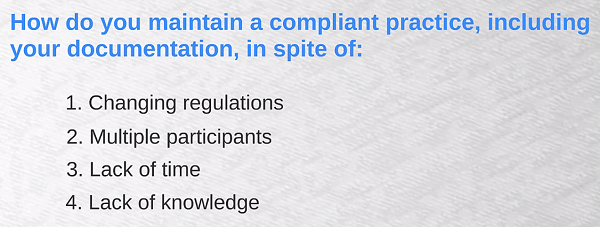What Are the Joint Commission’s Credentialing Standards and How Does It Apply to Chiropractic?
The Joint Commission is an independent, non-profit organization that accredits and certifies healthcare organizations and programs in the United States. The Joint Commission has established credentialing standards for healthcare providers, including chiropractors, who provide patient care within accredited healthcare organizations. These standards are designed to ensure that healthcare providers meet certain requirements for education, training, licensure, and competence and that they are able to provide safe and effective care to patients. The Joint Commission’s credentialing standards require healthcare organizations to: Verify the qualifications and credentials of healthcare providers, including chiropractors, prior to granting clinical privileges. Establish and maintain a process for ongoing monitoring and evaluation of healthcare providers’ competence and performance. Ensure that healthcare providers receive ongoing education and training to maintain and enhance their competence and skills. Document and maintain accurate and complete records of healthcare providers’ credentials, qualifications, and performance. Specifically, for chiropractors, the Joint Commission’s credentialing standards require that healthcare organizations verify the chiropractor’s licensure, education, training, and certification, as appropriate. The organization must also assess the chiropractor’s competence to perform specific procedures or provide specific types of care, such as spinal manipulation, and grant clinical privileges accordingly. The organization must also monitor and evaluate the chiropractor’s performance and competence on an ongoing basis and ensure that the chiropractor receives appropriate continuing education and training. In summary, the Joint Commission’s credentialing standards apply to chiropractors by requiring healthcare organizations to verify and evaluate their qualifications, competence, and performance before granting clinical privileges. These standards are designed to ensure that chiropractors and other healthcare providers are able to provide safe and effective care to patients within the context of an accredited healthcare organization. Learn more about how CredEdge simplifies credentialing and protects your revenue: Schedule a Free Credentialing Consultation Book a Consultation
How to Get Credentialed for Insurance

Credentialing for insurance coverage is a vital step when establishing a private practice. The process involves application, information verification, and contract negotiation with insurance providers. It typically takes 90-120 days to complete. Essential information includes NPI and CAQH ID, malpractice insurance, and tax-related details. A comprehensive practice management platform like ClinicMind streamlines credentialing, along with billing, scheduling, and other business aspects, allowing providers to focus on patient care.
Compliance Worries Eliminated
Eliminating Compliance Worries was Key for this High-Volume Practice Genesis Chiropractic Software offers today’s Chiropractic office a dramatic edge in in compliance. In 10-15 seconds, this no-read, no-write, touch screen system allows you to spend more time with your patients and reduce any worries about compliance and audit risk. Today’s feature article is about a doctor who operates a high-volume practice and was tired of worrying about compliance issues as his practice grew. Dr. Tony Nalda, D.C. at Celebration Family Chiropractic in Florida, had real concerns about patient compliant documentation. As his practice grew to over 1500 patients a week. He was having a hard time with other EHR systems and needed a find a way to both manage his patient care and eliminate the worries about patient compliant documentation that comes with a high-volume practice like his. When he found Genesis Software, he knew he had found his solution. “I never really had a system where I could actually change notes and update them directly,” says Tony. “It’s not only helped me to stay compliant but I’ve stopped worrying at night while I sleep whether or not the documentation is right, because I am able to do it in real-time. It’s amazingly complete.” Dr. Nalda’s practice is a blend of cash, insurance, and personal injury, and as such, he worried about being able to maintain the level of compliance needed to continue his success. But, Billing Precision’s Genesis Chiropractic Software is designed to maximize efficiency while maintaining compliance standards. Automatic compliance alerts embedded in the Genesis Chiropractic Software ensures that you are aware of potential compliance risks. “The documentation has been amazing for me and my practice and allowed me to stay on top of things, where I really had a hard time with other systems I was using previously.” Genesis Chiropractic Software excels where other systems fail because it becomes infinitely more valuable as your practice grows. By using Genesis software, your practice will see increased patient revenue, retention, and compliance. And, your practice can continue to operate in any configuration, whether as a cash, insurance, and/ or personal injury. No matter what size of practice you have, Genesis Software for Chiropractors gives clients all the tools they need to stay compliant and sleep easy knowing you are using the best system available to give your patients the care they deserve. Contact us today to see how we can help you achieve the confidence and peace of mind that comes with Billing Precision and Genesis Chiropractic Software.
Prevent Chiropractic Compliance Failure

Three Key Practice Compliance Skills in a Genesis Training Webinar Compliance with laws and regulations is very important. Practice Owners and Management Staff regularly have questions about how to maintain a compliant practice, including patient visit documentation. How can you keep up with changing regulations and multiple participants when you have a lack of knowledge and a lack of time? Watch this free webinar to learn more. Read the transcript: Reuven: Hey, everyone, and welcome to our webinar today on “The Secrets to Prevent Compliance Failure.” Compliance, obviously, is one of the biggest things that preys on practices today especially in the physical health realm. Whether you’re a chiropractor, physical therapist, mental health, it really doesn’t matter. Across the whole spectrum, you know, you see these situations where compliance becomes a real problem. And so when we talk today, we’re gonna get to the root cause of the problem. We’re gonna talk about, what is so important when it comes to compliance and how is it that our solution really helps you to prevent issues with compliance? And in order to do that, we’re gonna talk about obviously, why that problem is important, why compliance is important. We’re also gonna talk about why compliance is so difficult. You know, one of the biggest questions we get asked on a regular basis is why can’t this just be super easy? And there are solutions out there that will try to do that for you, but often times, they won’t do it in a compliant way, and so you end up being faster but less compliant which, in the end, is not good for your practice. So the real question is how do you maintain a compliant practice? You know, and that includes your documentation. And really, the question becomes more specific in that you have to maintain compliance in spite of things like changing regulations and, of course, we talk about how regulations will change starting with the federal level, with Medicare, and then Blue Cross Blue Shield, and then out to the rest of the commercial insurances, and then, of course, then to the state boards. And the next issue is with multiple participants, you know, different people that have their hands, that have their fingers in different pies and, of course, obviously, a lack of time, you know, with regards to just how much time you can spend. You know, it’s easy to say that if you had an hour per document that you could be super compliant without even using a system, but it’s really not practical. And the other side of it is that as a clinician, you know, we’re really trained to treat patients, not treat, you know, a healthcare system that requires so much of us. And so this lack of knowledge becomes a real debilitating situation to the point where, you know, there’s an entire industry surrounding compliance outside of solutions like ours where, you know, practices will spend lots and lots of money to make sure that they can avoid losing a lot more money. And so this problem really is really big and really complex and, you know, what we’re gonna try to do today is really simplify that problem and make it easier to understand and easier to solve. So the next question is why is it important? And that really comes down to a few things, and the first one is, in the course of running a practice, you know, there’s always gonna be an expected rate of error. So this is a really basic idea. No matter what you are doing, there’s always going to be mistakes that are made, and that’s just a factor of being human. And a lot of people say, “Well, if you automate it all, then you get rid of mistakes.” And what we find actually is, in technology, there’s also an expected rate of error. For example, you know, any of you, Windows users, will remember when the new version of Windows comes out, there are always issues with it, and so, they always have to update it, and you always have to download these Windows’ updates. And we find the same thing with Apple. Everybody remembers the big debacle with…I think it was Apple iOS 5 or 6 where, you know, things just started crashing on devices like iPads. And so what we find is that there’s always a percentage of error especially when you have people, especially when you have technology, but especially when you have both working together. And so it’s not a matter of saying, “All right, well, I expect errors which means that I’m kind of at a loss to begin with,” it’s more a matter of, “Okay, I understand that there’s a problem, the next question is how do I address that problem?” So we wanna understand that, of course, any errors can result in costly penalties, we wanna be aware of the effect of our mistakes so that we can focus on ways to minimize them. So the next question really becomes why is it so difficult to solve? And so with so many moving parts in a practice, you know, you’re dealing with yourself as an owner or yourself as a front office practice manager, whatever it is you’re doing, but you have practitioners, you have front office staff, you have practice managers or office managers, you have the patients, which are the most moving part in your office, you know, and then, of course, you have all the supporting things like the solution that you’re using or anything like that. So you have lots and lots of moving parts with different people, some of which have different processes and, really, that are relying on different technologies. And so take all of that and then add the complexity of a constantly changing environment with regulations. And, of course, knowing that you might have different sets of regulations because Medicare might have changed things before

